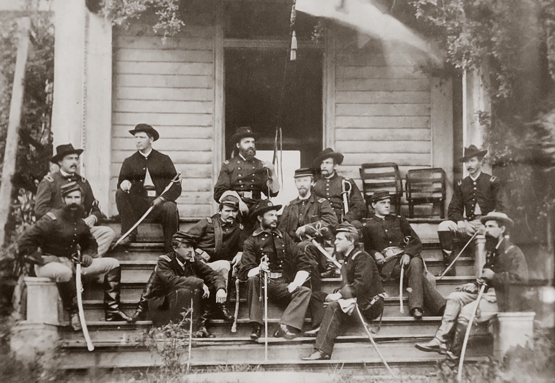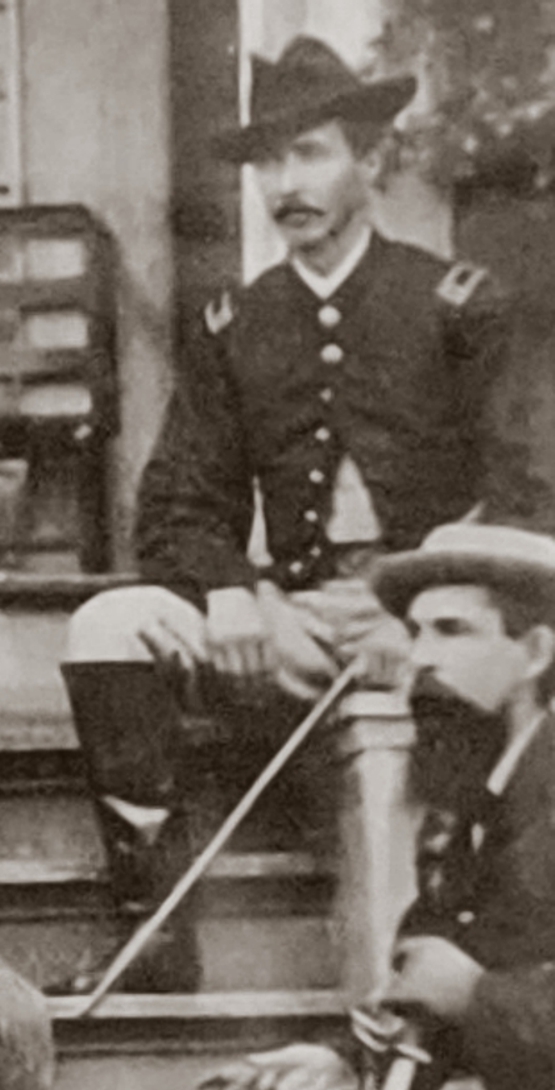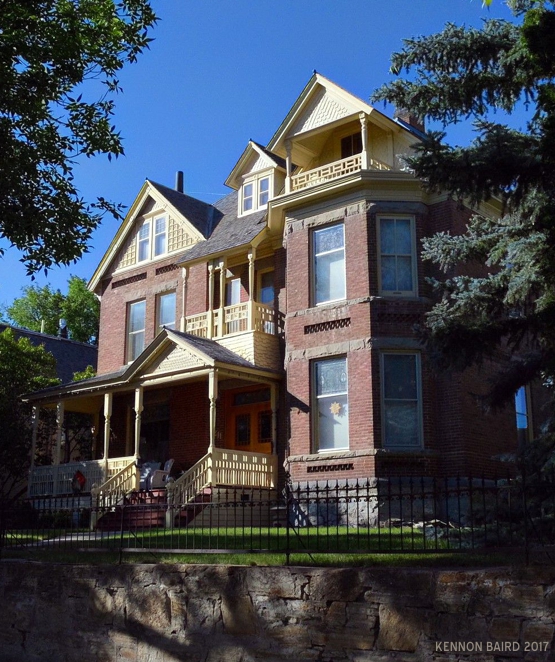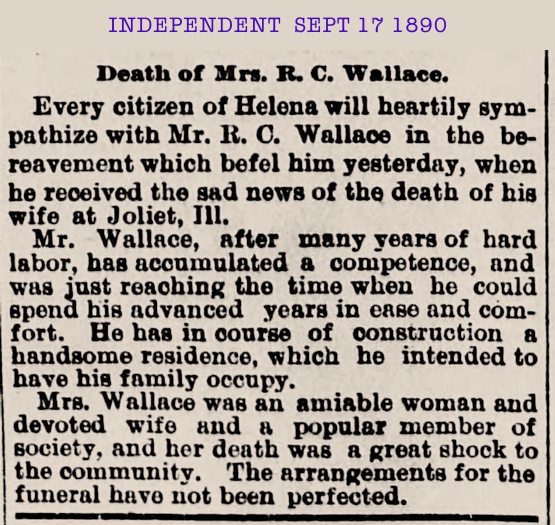Fred Leeson provides this concise biography of Wallace, who was highly-regarded in his professional and civic endeavors:
Scottish-born Robert C. Wallace, slightly built by todays’ standards, built an imposing reputation for diligence, compassion and integrity as a Union officer in the Civil War and as a pioneering Helena merchant.
Wallace was born in 1837. His family immigrated to Michigan in 1844. After completing high school, Wallace worked for a few years in the retail business before volunteering to fight for the Union in the Civil War. His original 90-day commitment ended up lasting through the war.


PHOTO ATTRIBUTED TO MATTHEW BRADY
COURTESY OF FRED LEESON
Wallace engaged in several battles, including Bull Run, Gettysburg and Appomattox. What was
supposed to be an easy Union victory at Bull Run turned into a rout by the Rebels. “Bull Run was a costly experience, but was really worth all the cost, as it roused the North to see what they were up against and that the war was a reality and not a shadow, as some of our people thought it was,” he wrote many years later in an autobiography, “A Few Memories of a Long Life.”
Wallace was captured by Rebels in 1862 during a reconnaissance trip, but later was returned in a prisoner transfer. He said he was treated well by his captors, whom he found to be intelligent and caring.
In 1863, Wallace’s unit came under the leadership of General George Custer. “Many expressions of displeasure were heard because a yellow-haired boy of twenty-three was put in command of us who thought ourselves veterans,” Wallace wrote. ”But it was not many days before we all felt the yellow- haired boy was the peer of any man in the division, and such he proved himself to be.”
At one point, Wallace’s division was quartered near Custer’s home, and Custer asked Wallace to check in with Custer’s wife daily for a week to see that she was OK. “During one of my visits she told me that the first time she ever saw the General was while he was home on leave from West Point, where he was a cadet and was so drunk that the sidewalk was not wide enough for him. I thought that was rather singular as we all knew that the General now did not touch a drop of ardent spirits; no doubt, owing to the influence of his good wife, he lived and died a total abstainer.”
Wallace survived the war uninjured. However, once fleeing on horseback from Rebel pursuers, he reached up to grab his hat as it flew off his head. A bullet passed through the hat.
After the war’s end at Appomattox, Wallace watched the public review staged by both armies. His thoughts for both sides were similar. “During the war I once heard a prominent minister dilate on the awful things that were to happen when the country would be over-run by a million or more discharged soldiers,” he wrote. “How little he knew the American Volunteers. Really, the country was in more danger from the preachers than from the men who had fought the four years’ war.”
After return to Michigan for a few years, Wallace, still single, decided to head west in 1869. He visited Omaha and Cheyenne, then Salt Lake City. In Utah, he heard from Montana miners who said the mines had played out. Wallace figured there still might be opportunity.
After arriving in Helena in 1869, the essentially penniless Wallace spent two years share-cropping potatoes, and then opened a tiny store where he worked and slept. In 1873 he partnered with J.L. Davis at a larger location. He liked Davis personally, but could not accept Davis’ spending habits and Wallace eventually bought out his partner.
Wallace married Ellen Shaw in 1875. The couple had one son and a daughter. As the Wallace Store prospered, the couple built an imposing three-story brick home at 211 8th Ave. in 1890. They travelled to New York to order furniture to be shipped around Cape Horn; his wife died on the return trip. For many years, a large oil painting of Ella Wallace hung in the dining room of the large home, which still stands in good condition adjacent to the First Baptist Church.


Wallace found time for public service. In the early years, he was an active member of the Volunteer Fire Department. “We of the Hose Company had weekly meetings, at which no subject for discussion was barred,” he recalled. The volunteers often torched unwanted sheds or small buildings for training purposes. “Our motto was “”We destroy to save” and it may be said we lived up to that motto.”
Wallace served as the municipal treasurer in 1883 and was elected the same year to the Territorial Legislature.
The national financial panic of 1893 caused considerable financial grief for Wallace, but he managed to survive with diligence and close attention to reducing costs. “Let me say here to those who came after me – don’t live beyond your means…Cultivate a close friendship with reasonable economy –it is the truest friend you will ever meet, and will never go back on you. It will lead you to success and without it you never can succeed in the long run.”
Wallace, who signed his documents “R.C. Wallace,” indeed succeeded in the long run. He died in 1928 at age 91. As for his adopted home, he wrote, “I like the people of Helena. They are a free, independent and generous people.”

In 2000, Bettie Chambers
wrote a history of Wallace's enterprises for the Independent
Record; you may read
the story here (link courtesy of Cathee Crapo).

|

